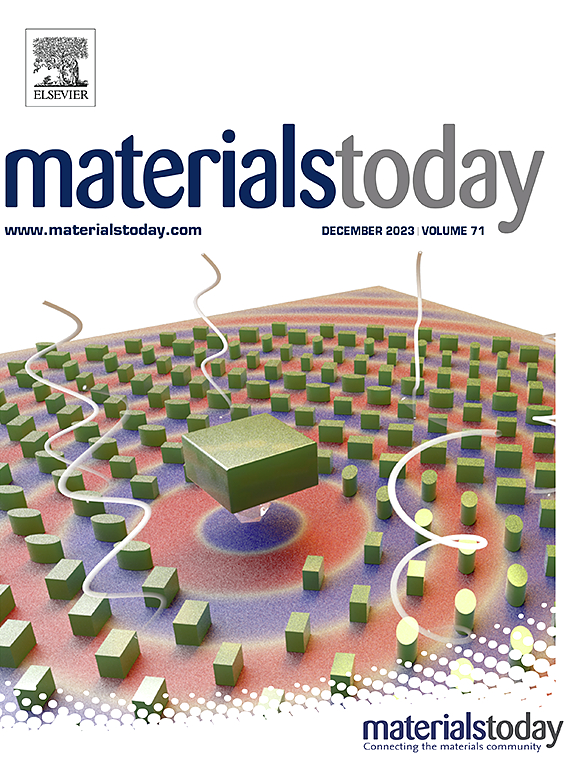Role of clustering in the anomalous properties of supercritical fluids
IF 21.1
1区 材料科学
Q1 MATERIALS SCIENCE, MULTIDISCIPLINARY
引用次数: 0
Abstract
We propose that the anomalous (non-monotonic) behavior of physical properties of supercritical fluids (SCF) in the Widom delta is attributed to the formation of medium-sized clusters. This hypothesis is experimentally verified for carbon dioxide using both experimental methods and molecular dynamics simulations. From a microscopic point of view, the non-monotonic behavior of the nonlinear refractive index, speed of sound, and Raman scattering efficiency is caused by the formation of quasi-linear clusters of medium size (5–200 molecules per cluster). Within the clusters, the molecule concentration is close to that of the liquid phase, while outside the clusters, it resembles the gas phase, leading to experimentally observed high (∼15 %) density fluctuations. Isolated linear clusters exhibit high second-order hyperpolarizability, resulting in an increase in the molecular contribution to the nonlinear refractive index and the intensity of Raman scattering. The appearance of multiple Widom lines on the pressure–temperature (p-T) diagram, each associated with unique physical properties, arises from the combined effects of cluster-specific and density-related factors. This interplay results in the divergence of Widom lines and the formation of the characteristic feature known as the Widom delta.

求助全文
约1分钟内获得全文
求助全文
来源期刊

Materials Today
工程技术-材料科学:综合
CiteScore
36.30
自引率
1.20%
发文量
237
审稿时长
23 days
期刊介绍:
Materials Today is the leading journal in the Materials Today family, focusing on the latest and most impactful work in the materials science community. With a reputation for excellence in news and reviews, the journal has now expanded its coverage to include original research and aims to be at the forefront of the field.
We welcome comprehensive articles, short communications, and review articles from established leaders in the rapidly evolving fields of materials science and related disciplines. We strive to provide authors with rigorous peer review, fast publication, and maximum exposure for their work. While we only accept the most significant manuscripts, our speedy evaluation process ensures that there are no unnecessary publication delays.
 求助内容:
求助内容: 应助结果提醒方式:
应助结果提醒方式:


